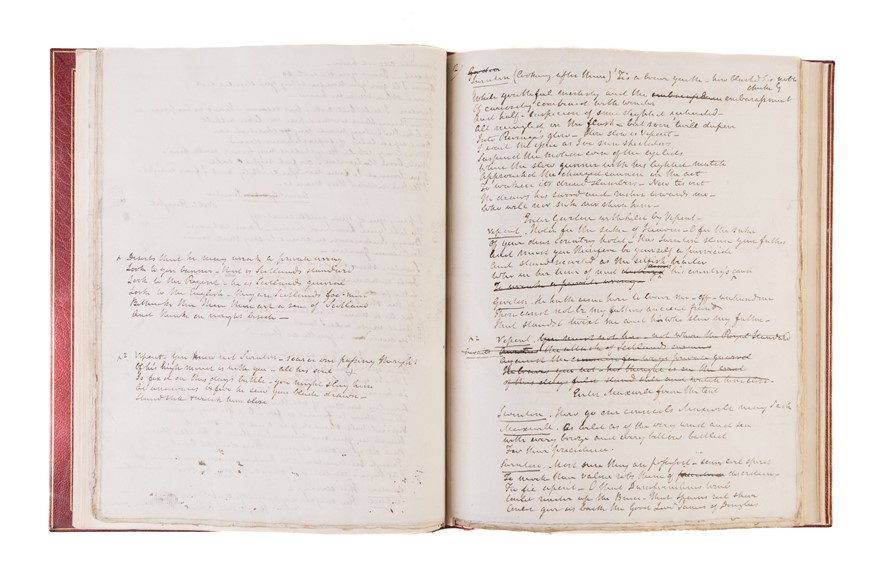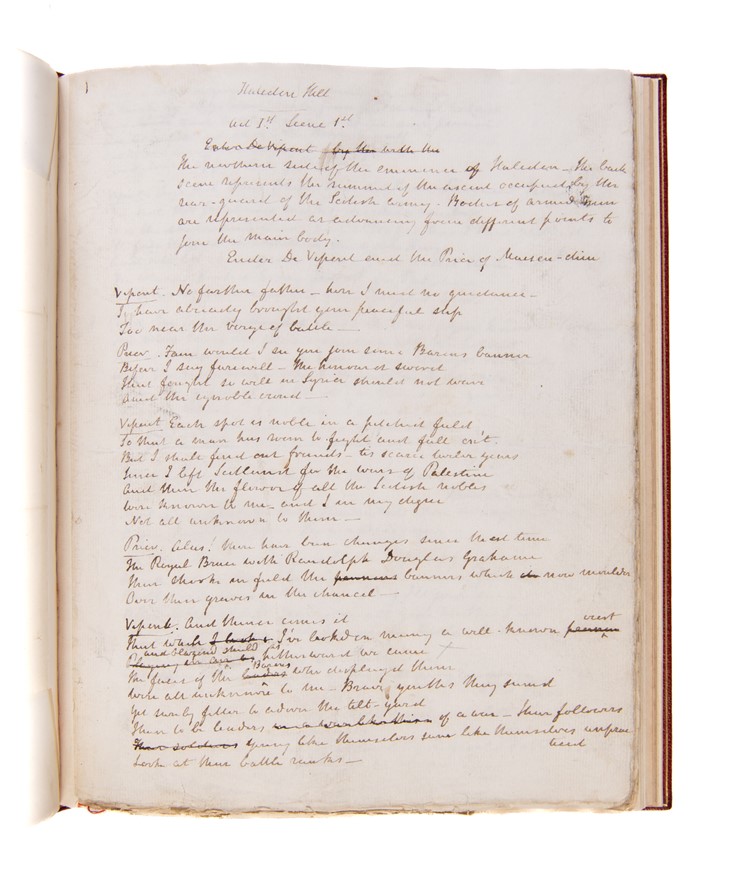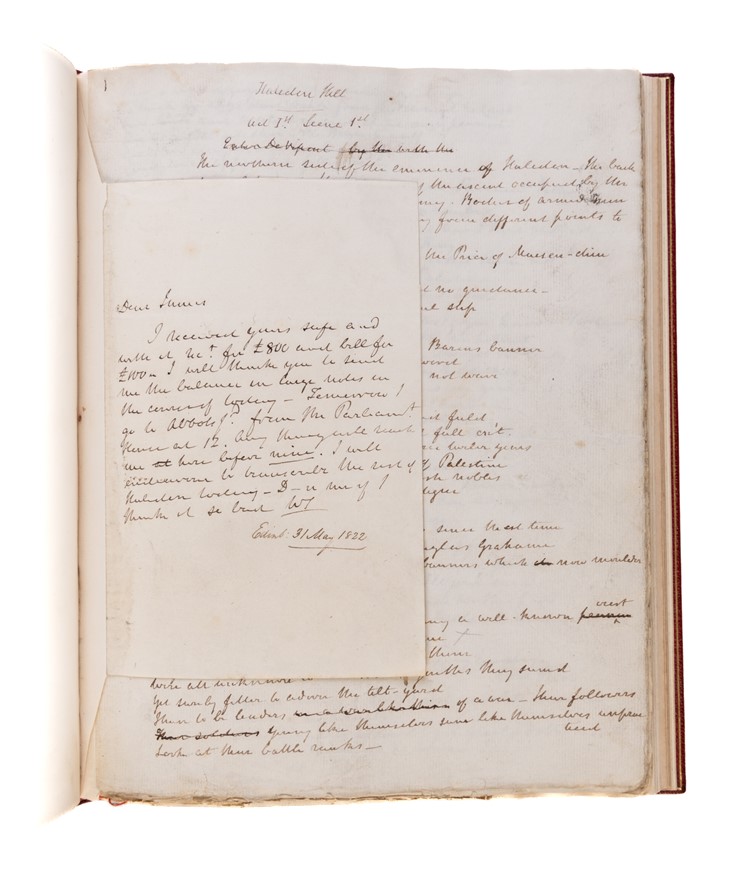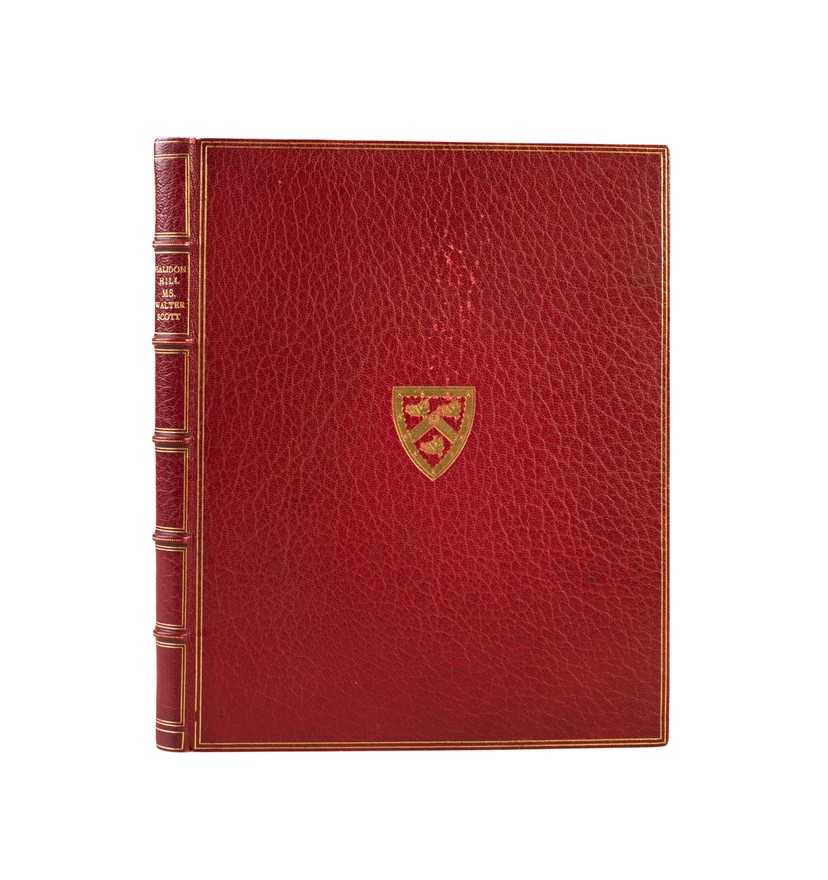Halidon Hill
SCOTT Sir Walter (c.1822. )
£100000.00
Please contact us in advance if you would like to view this book at our Curzon Street shop.
THE ORIGINAL MANUSCRIPT OF SCOTT’S, “DRAMATIC SKETCH” - WRITTEN, “IN THE COURSE OF TWO RAINY MORNINGS AT ABBOTSFORD”
Autograph Manuscript. 36 leaves [a few leaves watermarked “1817”] written in ink predominantly on the rectos only but with additional verse on some of the blank versos. Paginated: 13, 1-6, 10-13, 1-13, [1] ff. With numerous authorial corrections, deletions, and additional passages. A little dusty in places, a few minor marks, some of the leaves folded for postage; carefully guarded and bound with an ALS by Scott to his editor and publisher, James Ballantyne and notes on the provenance of the manuscript by George Sitwell Campbell Swinton [see below]. Full crushed crimson morocco for Bumpus [signed on the turn-in], upper board with the gilt armorial stamp of the Swinton family, spine ruled and lettered in gilt (minor abrasion to the upper cover but otherwise very fine).
[Abbotsford],
“O my brave countrymen! what fascination has seized you to-day, that you stand like deer to be shot, instead of indulging your ancient courage, and meeting your enemies hand to hand? Let those who will, descend with me, that we may gain victory, or fall like men”
A POWERFUL DEPICTION OF SCOTTISH IDENTITY AND AN EXAMINATION OF HISTORICAL AND CONTEMPORARY CONCERNS SURROUNDING ANGLO-SCOTTISH RELATIONS
The autograph manuscript of Scott’s “Dramatic Sketch”, describing the bloody battle between the English and Scottish forces at Homildon Hill in 1402. The manuscript has an unbroken provenance from Scott to the present day and has been owned for over a century by the Swinton family who are immortalised in the work.
Halidon Hill was published by Archibald Constable on the 25th June 1822 in Edinburgh and by Hurst, Robinson & Co on the 4th July in London. The work is dedicated to Joanna Baillie and was originally intended for Baillie’s Collection of Poems (1823), but, as Scott explains in his “advertisement” before the printed text, the work, “swelled to the size of an independent publication” (for bibliographical information concerning the printed edition see Todd & Bowden Sir Walter Scott A Bibliographical History 1796-1832, 158Aa).
Halidon Hill was written, according to John Gibson Lockhart, in a period of “unresting” literary activity for Scott in which he completed The Fortunes of Nigel (published May 1822) and undertook a number of antiquarian projects. John Gibson Lockhart claims (“as I well remember”) that Halidon Hill was completed “in the course of two rainy mornings at Abbotsford” in the spring of 1822 (Lockhart, Life of Sir Walter Scott (p.507).
In a letter to Joanna Baillie written in February 1822, Scott outlines his idea for the work and highlights how the Swinton family were central in his thinking and in the re-telling of the tale:
“I am I say strangely tempted to write for your protogee a dramatic scene on an incident which happened at the battle of Halidon hill (I think) – it was to me a nursery tale often told me by Mrs Margaret Swinton sister of my maternal grand mother a fine old maiden lady of high blood and of as high a mind who was lineally descended from one of the actors…” (Letters of Sir Walter Scott, February 10th 1822, p.57).
[A longer description of this manuscript is available on request].
Stock Code: 246446







